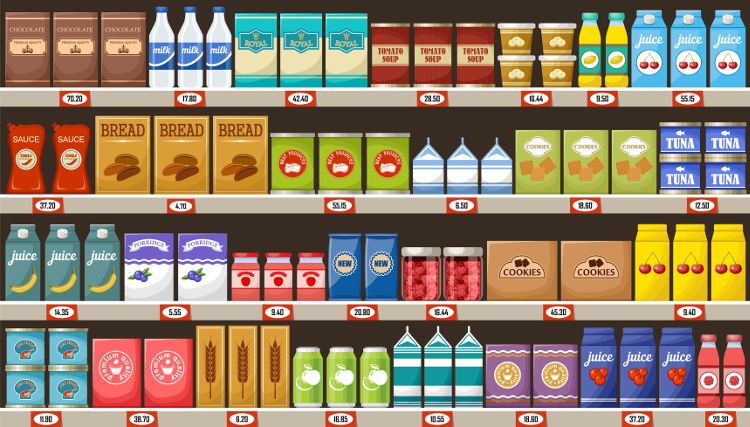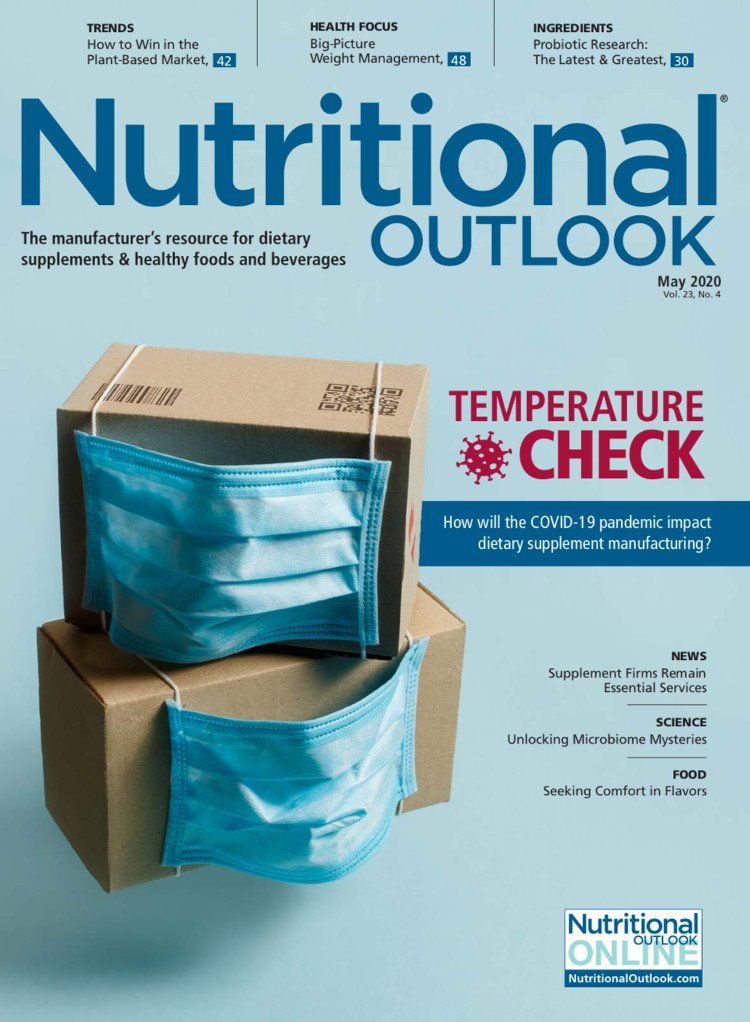How to win in the plant-based food and drink market
What will it take for a plant-based competitor to survive to the next round?
Photo credit © Nataliya Yakovleva-Stock.adobe.com

Time was when following a plant-based diet meant eating a lot of salads. Fortunately for the 38% of Americans now trying to add more plant-based foods to their routines1, today’s options aren’t nearly so limiting.
Roughly 800 new plant-based products hit shelves from 2017 to 2019, per Mintel’s Global New Products Database (GNPD), reflecting not just the category’s popularity, but its mainstream status, too. Yet that status is tipping an already-crowded market toward overflowing, even as rising consumer expectations make it harder for any SKU to stand out.
So while consumers may be “clearly intrigued by the tidal wave of new plant-based products,” says Melissa Machen, senior technical services specialist, plant protein, Cargill (Minneapolis), “brands have just one chance to impress. Manufacturers will need to up their formulation games or risk watching the category dissolve into a passing fad.”
Far from Fringe
Plant-based eating may be the dietary phenomenon of our era-and beyond. As Hamutal Cohen Yitzhak, CEO, director, Else Nutrition Holdings Inc. (Tel Aviv), puts it, “With more plant-based products and brands emerging, it’s evident that plant-based isn’t fringe; it’s the future.”
The movement’s ascendance has struck Cargill’s Machen for some time, particularly in the widespread availability of plant-based options not just in supermarkets, but also on menus and at institutions. “Innovative brands have launched a tsunami of products into this space, giving consumers a plethora of choices and ways to try alternative proteins,” she says.
And from Jenny Palan’s perspective, “Collaborations with food-biz majors and colonization of the traditional dairy and meat cases are definitely signs that plant-based has moved beyond being just a fringe category to being established.”
Flexing Their Muscle
Another sign of its status, says Palan, a strategic market research manager at Kerry North America (Beloit, WI): “Plant-based has evolved beyond appealing solely to vegans and vegetarians.”
According to the 2019 International Food Information Council Foundation Food and Health Survey, one third of consumers eat plant-based protein daily, with three quarters viewing it as healthy. Yet 2018 polling from Gallup found only 5% of Americans identifying as vegetarian, and fewer still-3%- as vegan.
So the wheel of the plant-based bus rests largely in the hands omnivores and flexitarians-the latter of whom comprised 44% of U.S. consumers in supplier ADM’s (Chicago) 2020 OutsideVoice Protein Perception & Awareness Study. And their top motive for plant-based purchasing: “healthy living/healthy aging.”
Healthy perceptions are just the start. “Consumers are more aware of the potential negative effects to the planet of consuming animal products,” says Chris Kerr, CEO and cofounder, Good Catch (New York City), “including damage to the ozone layer from farming beef, and overfishing of our oceans for seafood.”
The result, he believes, is “an increased desire and even need for products that ease these unnecessary harms to the environment and our health. This has allowed the plant-based sector to grow exponentially.”
New Meat; New Milk
Much of that growth comes from plant-based meat and dairy, which has “really changed consumer perceptions and increased acceptance of plant-based alternatives,” says Jatin Sharma, global market manager, Roquette (La Madeleine, France). “Today’s products have a similar taste, look, and texture to what consumers expect, which has helped break down stereotypes that consumers might have had after being disappointed with alternatives from the past.”
Christine Addington, senior dairy technical service specialist, Cargill (Minneapolis), agrees. “It’s amazing how the plant-based dairy space has grown and evolved with products that are actually tasty and have good texture.”
She recalls as a graduate student helping a major food manufacturer create a plant-based yogurt. “At the time there were few technical solutions available to create an acceptable product,” she says. “Fast-forward 10 years and we have ingredients that allow us to craft products very similar to dairy yogurt.”
Similar, perhaps even more revolutionary, progress has attended the evolution of plant-based meats. Burgers, patties, sausages, and crumbles were “category pioneers,” Cargill’s Machen says, and for good reason: “Burgers are a forgiving format, as they’re usually served on a bun with condiments and toppings that add flavor, texture, and juiciness.”
Now, “We’re seeing products that closely mimic traditional meat in color, texture, and bite,” she declares. “It’s clear that some brands are striving to create products that are indiscernible from meat, and they’re making significant progress toward that goal.”
Thank a Food Scientist
Their strategy: “It starts with better ingredients,” Machen says.
And those ingredients start with food science. That’s why Mindy Leveille, strategic marketing manager, proteins, Kerry Taste & Nutrition (Naas, Ireland), sees improvements in the category as “a tribute to food scientists and researchers finding ways to integrate new ingredients that make taste and texture come alive.”
Consider that texture defects in plant-based meat often arise when proteins display low solubility and poor gelling and water-holding capacities. Plant proteins have “come a long way in the last decade,” Machen notes, with solubility, mouthfeel, and stability all improving to the point where “we can produce meat analogues that are closer to their animal-protein counterparts.”
Adds Addington, “With a greater understanding of the molecular structure and chemistry of plant proteins, we can work with them in ways that are ideal for their inherent physical makeup. We’ve also made substantial advances in processing technology, which allows us to produce plant proteins with better taste and color, as well as solubility.”
Power Proteins
Machen believes pea protein stands out as novel enough to excite, yet not so much “that it feels unfamiliar to consumers.”
Cargill’s Puris pea protein is highly soluble, dispersible, and ideal for plant-based dairy thanks to its mouthfeel, Machen says. For meat analogues, it’s available in textured and powdered forms, both of which contribute meaty chew and viscosity along with “strong nutritional attributes.”
The company minimizes the pea protein’s characteristic “beany” notes by using yellow-pea seed varieties selected for their minimal off flavors and a hexane-free process that further tilts the protein’s profile toward neutral.
Silvia Schnicker, area marketing head, Americas, and global market manager at Roquette, notes that the company’s Nutralys pea protein also has “a pleasant taste” in plant-based applications. Roquette follows a mostly mechanical protocol to mill the peas into flour, disperse the flour in water, and then physically separate the starch, fiber, and proteins, which are gently dried “to preserve quality,” she says.
Roquette is already looking beyond pea and in late-2019 launched its first textured protein made from fava bean. Schnicker describes it as environmentally appealing, sustainable, and having “all the characteristics of being the next big thing in the plant-based protein domain.”
But Jacquelyn Schuh, product marketing director, alternative proteins, ADM, encourages processors to consider established proteins like soy and wheat gluten, which she credits as “among the best texture-enhancing ingredients with wide availability and cost-effectiveness.” Like newer pea and bean proteins, they also create the right bite, crumble, and juiciness in meat alternatives, she says.
Success Stories
Such ingredients have yielded success stories in alternative-dairy and -meat spaces.
“Vegan cheese is certainly one of the most challenging applications,” Cargill’s Addington says, “but it’s also an extremely exciting space to watch.” Dairy proteins contribute critical properties that translate as stretch, mouthfeel, texture, aging, and flavor, she notes, and plant ingredients don’t perform as well.
“That said, a number of manufacturers have dived into this space and launched vegan shredded, sliced, and block cheeses that sometimes get really close to duplicating traditional dairy characteristics,” she adds. “With help from hydrocolloids, starches, and fibers, industry’s making improvements every day.”
Advances in alternative meats have also attracted attention, with technologies like high-moisture extrusion allowing processors to “make strides toward recreating the texture, appearance, and bite of striated muscle fibers,” Machen says-qualities that she notes are among the most difficult to recreate.
As for nuggets and patties, textured pea and soy proteins continue to deliver convincing texture, and Machen mentions that some brands are even tackling plant-based seafood.
Smooth Sailing
Good Catch is at the vanguard. Inspired by “a lack of plant-based seafood options despite the immense growth of plant-based meat,” Kerr says, the founders created a plant-tuna of their own.
The principal hurdle involved replicating tuna’s characteristic “layering of protein,” Kerr says, which is especially apparent in the cooked fish. “We spent 18 months working on this flaky texture before even diving into taste development.”
Ultimately, the company settled on a formulation comprising a six-legume blend-peas, chickpeas, lentils, soy, fava beans, and navy beans-and algae oil, which Kerr calls “the special plant ingredient that captures seafood’s authentic flavor.” Running that mix through a “leading-edge process” produced the texture and taste the company aimed at.
With that accomplished, “We have products in the pipeline that expand beyond plant-based tuna and dive into the frozen category, including plant-based crab and whitefish,” Kerr notes. And a joint-distribution deal with Bumble Bee Foods “shows that we’re breaking ground in the space. The commitment of long-established industry members shows that the direction for the category is up.”
Room to Grow
Their achievement, and those of plant-based frontrunners like Beyond Meat and Impossible Foods, marks a substantive turning point for the category, and the industry.
But, says Roquette’s Sharma, “Though the quality and appeal of plant-based products has improved significantly, we still have to work at bringing all the sensory and nutrition aspects together in one product.”
Nailing the organoleptics remains complex in meat analogues, where the “distinct bite, chew, succulence, lubricity, and firmness are difficult to replicate,” Machen says. Despite advanced proteins, formulators still often need hydrocolloids, starches, and binder systems to “achieve the optimal balance between a firm bite and juiciness,” she notes.
Alternative dairy also has wrinkles to iron, including texture. Milkfat supplies much of the texture and mouthfeel we associate with dairy, and in its absence, native starches, chicory root fiber, and pectins can contribute richness and creaminess. “These label-friendly ingredients also provide stability and syneresis control while withstanding nondairy applications’ harsh processing,” Addington says.
And despite the advances of flavor-masking systems in correcting the beany, earthy, malty, and sulfur-like notes that haunt some plant-based ingredients, taste remains a purchase barrier-the primary purchase barrier, in fact, per ADM’s OutsideVoice Protein Segmentation Study.
Quality, Not Quantity
Regarding nutrition, Jing Zhou, protein clinical scientist, Ingredion Inc. (Westchester, IL), believes it’s important to try to match plant-based alternatives’ nutritionals to their dairy and meat models, given the role they play as vegan and vegetarian consumers’ primary protein sources.
“While plant-based protein sources are perceived to have lower protein quality,” she notes, “many-like cereals and legumes-are complementary regarding their amino acid profiles. So if a person is consuming proteins from a variety of sources, including complementary ones, they should get enough protein of good quality.”
Kerry’s ProDiem Complete plant protein combines complementary pea and rice proteins in a ratio that’s nutritionally equivalent to dairy, egg, or meat, Leveille says.
Adds ADM’s Schuh, “Soy proteins offer high protein quality, with a PDCAAS (protein digestibility corrected amino acid score) of 1, and can be a further value-add when blended with pea protein, ancient grains, and legumes to achieve a well-rounded, functional nutritional profile.”
Yet plant-based foods best their animal counterparts vis-Ã -vis their higher fiber and lower saturated fat and cholesterol contents. “These factors improve metabolic health,” Zhou says, “which is a factor in people’s decision to switch to plant-based alternatives in the first place.”
Plant-based foods are also richer in potassium, magnesium, and vitamins E and C, “which presents opportunities to develop foods to support cardiovascular, nerve, muscular, and immune health,” Zhou continues. That said, poor showings in vitamins B12 and D, calcium, iron, and zinc mean that products, especially dairy alternatives, often need fortification to bring nutrition up to par, she says.
Clean Sweep
And while plenty of consumers flock to plant-based products in search of “cleaner” alternatives to traditional meat and dairy, plant-based products don’t always live up to that reputation. This can be a problem, as 60% of respondents to ADM’s OutsideVoice Primary Research Study claimed that recognizable ingredients influence their purchase decisions, while two-thirds expressed interest in labels with the shortest ingredient lists.
“Keeping ingredient lists clean and familiar will help elevate the health reputation of plant-based products,” says Ryan George, marketing manager, Kerry North America (Beloit, WI). “Key ways of doing this include using natural flavors, extracts, and preservatives; clean-label options for maintaining freshness and shelf life; and clean-label plant-based dairy and meat systems.”
However, Kerr counters, “‘Clean’ doesn’t necessarily mean a short ingredient list. All plant-based alternatives need a series of building blocks to attain the mouthfeel, performance, and flavors we seek-the same way a house’s foundation is the combination of elements that create a habitable structure. It’s never just the protein alone.”
In the end, says Kendall Miller, brand manager, Ancient Harvest (Boulder), “If consumers want to eat more cleanly, they need to look for labels that have recognizable ingredients that come from real whole foods.”
What Will It Take?
Other than clean labels, nutrition, and spot-on organoleptics, what else will it take for a plant-based competitor to survive to the next round?
“In simplest terms,” surmises Kerr, “perpetual innovation. Look at where the sector was 40 years ago, 10 years ago, and now today. Imagine where it will be in just a decade. The advances that a relatively small amount of R&D accomplished in the last four years alone has reshaped a 70,000-year-old paradigm, and none too soon.”
Sidebar:
Just The Way You Are: Going Plant-Based For Plant’s Sake
When consumers think of “plant-based,” alternatives to meat and dairy usually come to mind. But, says Christine Addington, senior dairy technical service specialist, Cargill (Minneapolis), “Terms like plant-based and vegan are turning up in many applications outside dairy and meat. Snacks, cereals, sauces, convenience products-the plant-based revolution seems to be everywhere.”
That makes sense to Ryan George, marketing manager, Kerry North America (Beloit, WI). Tracking the Mintel Global New Products Database from 2017 to 2019, he saw plant-based launches grow 600% for dressings and vinegars, 300% for savory spreads and dips, 186% for sauces and seasonings, and 129% for snacks.
Why so much plant-based innovation? Consider that snack seasonings like sour cream and onion or nacho cheese are traditionally dairy based, George says. “Consumers are still looking for the rich, dairy-like taste in these applications, but in plant-based formats.”
Not all plant-based patrons want dairy or meat replicas, adds Kendall Miller, brand manager, Ancient Harvest (Boulder). “Some just want a clean nutrition label with easily recognizable ingredients that come from plants and have been minimally processed,” she says.
She’s seen this shift everywhere “from tradeshows to marketing communications,” she says. “There seems to be a growing callout of plant-based ingredients on packaging in multiple categories.”
Like infant formulas. “That’s an area where product developers are now using organic, hypoallergenic ingredients,” notes Mindy Leveille, strategic marketing manager, proteins, Kerry Taste & Nutrition (Naas, Ireland). And hypoallergenicity is key, “as the plant-based formulas are often solutions for infants with intolerances or allergies.”
Such is the case with Else Nutrition. The company’s namesake product is a plant-based formula that’s not just free of allergenic dairy ingredients, but of soy, too. “We’ve used the benefits of almonds, tapioca, and buckwheat to create a new plant-based, soy-free alternative to formula that imitates human milk’s nutritional composition,” says Hamutal Cohen Yitzhak, CEO and director of Else Nutrition Holdings Inc. (Tel Aviv).
“We know that a product like this isn’t a fad, but a necessity for families who have been searching for a real alternative to dairy and soy formulas,” she says.
The formulation emerged from the knowledge that the essential fatty-acid profile of almonds almost mirrors that of breastmilk, obviating the need to “piece together the fatty-acid profiles from various highly-processed oil sources,” Yitzhak explains. What’s more, the formulation’s combination of almond and buckwheat yields a protein profile resembling breastmilk’s.
Even pasta’s getting in on the plant-based game.
“Pasta has always been plant-based,” notes Greg Forbes, CEO, Explore Cuisine (Red Bank, NJ). But Explore’s products, he believes, are different. “If you look at protein levels, our legume-based products have significantly more protein than traditional pasta. We’ve also got a lot more fiber.” Their edamame spaghetti delivers about 40 grams of protein per 100 grams, is very high in fiber, and has 7 grams of net carbs.
Forbes notes that the company launched a spirulina-boosted edamame pasta with the protein, fiber, and lower carbs of the original, but with spirulina-sourced iron, too-a mineral often in short supply among vegetarians. “We’re looking at how to take our base ingredients and add superfoods to them,” he says. “To me, it’s the best product we’ve ever made.”
References:
- Mintel. “Trending on US Menus: Plant-Based Protein Report.” (May 2019).

HHS announces restructuring plans to consolidate divisions and downsize workforce
Published: March 27th 2025 | Updated: March 27th 2025According to the announcement, the restructuring will save taxpayers $1.8 billion per year by reducing the workforce by 10,000 full-time employees and consolidating the department’s 28 divisions into 15 new divisions.






















